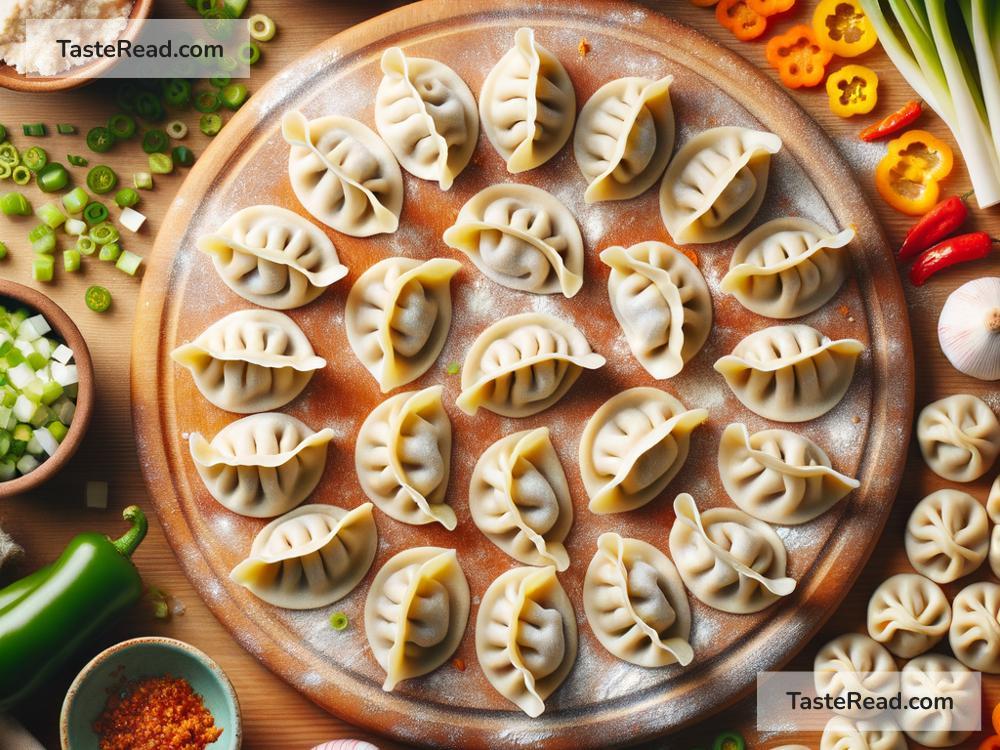Title: Zero-Waste Wonder: How to Cook Mouth-Watering Dumplings Using Leftovers
Are you looking for a fun and delicious way to minimize food waste at home? Dumplings could be the solution you never knew you needed! Not only are they scrumptious, but making dumplings also offers a fantastic opportunity to repurpose leftovers into something exciting. In this article, we’ll guide you through the simple steps of making zero-waste dumplings using leftovers. Get ready to transform your scraps into a culinary delight!
Why Choose Zero-Waste Dumplings?
Before we dive into the “how,” let’s talk about the “why.” Food waste is a huge issue globally, with vast amounts of leftovers ending up in landfills every year. By finding creative ways to use our leftovers, we’re not just saving money; we’re also doing our part for the environment. Plus, making dumplings from leftovers is an excellent way to experiment with flavors and discover new favorite combinations.
Getting Started: The Basics
First thing’s first: you’ll need some dumpling wrappers. You can find these at most grocery stores in the refrigerated section, or if you’re feeling adventurous, you can make your own with flour, water, and a pinch of salt. For a simple dumpling wrapper recipe, mix 2 cups of flour with up to ¾ cup of boiling water, knead until smooth, and roll out thin circles.
Now, let’s move on to the star of the show: the filling. This is where your leftovers come into play. Virtually any kind of cooked protein (like chicken, beef, or tofu) and vegetables can be transformed into a delicious dumpling filling. Below is a basic method to create your filling and suggestions for giving it a flavorful twist.
Creating the Filling with Leftovers
-
Choose Your Base: Look in your fridge. Do you have leftover roasted vegetables, grilled chicken, or perhaps some stir-fried beef? Almost anything goes. Chop your leftovers finely so they’ll be easy to enclose in your dumpling wrappers.
-
Add Fresh Aromatics: To elevate the taste of your filling, add some finely chopped aromatics. Think garlic, green onions, ginger, or cilantro. These will give your dumplings a fresh flavor boost.
-
Season: Depending on what your leftovers already contain, you might want to add some extra seasoning. Soy sauce, sesame oil, and a dash of salt or pepper can work wonders. Tasting your filling (make sure it’s cool!) will help you decide what it needs.
-
Bind It: If your mixture seems too dry or loose, adding a small whisked egg or a bit of cornstarch can help bind everything together.
Assembling and Cooking Your Dumplings
With your filling ready, it’s time to wrap your dumplings. Place a small spoonful of filling in the center of each wrapper, dab the edges with a bit of water, and fold. There are many techniques for folding dumplings, from simple half-moons to intricate pleats. Feel free to experiment or look up tutorials for different styles.
To cook, you can either boil, steam, or pan-fry your dumplings. Here’s how:
-
Boiling: Bring a large pot of water to a boil, gently add your dumplings, and cook until they float to the surface and the wrapper becomes translucent.
-
Steaming: Line a steamer with cabbage leaves or parchment paper, place your dumplings inside without touching, and steam for about 15-20 minutes.
-
Pan-frying: Heat a bit of oil in a skillet over medium heat, add dumplings, cook until the bottom turns golden brown, then add a small amount of water to the pan and cover. Let the dumplings steam until fully cooked through.
Serving Your Zero-Waste Dumplings
Serve your deliciously sustainable dumplings hot, with your choice of dipping sauces. Soy sauce, vinegar, or a mix of both with some chili oil can create a perfect dip. Don’t forget to share your culinary creation with friends and family – they won’t believe you made these tasty treats from leftovers!
Final Thoughts
Making zero-waste dumplings is not just about cooking; it’s a step towards more sustainable living. By utilizing ingredients that would otherwise be thrown away, we’re reducing waste and treating our taste buds simultaneously. This straightforward process not only yields delicious results but also empowers you to get creative in the kitchen. So next time you find yourself with a fridge full of leftovers, remember that dumplings could be your next great meal. Happy cooking!


